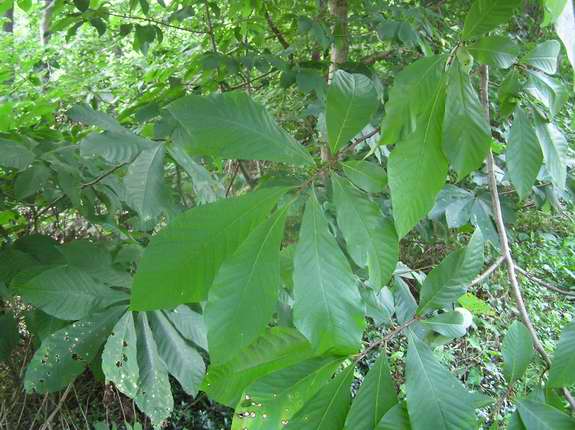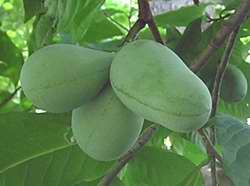|
Common Name: Pawpaw (Arawakan name for papaya, a Caribbean fruit of similar appearance but of a different species), Custard Apple Scientific Name: Asimina triloba
Potpourri: The Pawpaw is the largest edible fruit that is native to North America. Cultivation of the Pawpaw as a commercial crop was once widespread but waned in the late 19th Century and virtually ceased after World War II. This occurred in part because the Pawpaw has brittle roots that do not transplant well. In addition, it is protogynaus, the female stigma maturing before the male pollen is shed so it does not pollinate well. Only 0.41 % of Pawpaw flowers on naturally pollinated plants result in a fertilized fruit with seeds. Recent efforts to reestablish commercial Pawpaw production have resulted in a 17% fertility rate which has been achieved by pollinating the flowers by hand.
The medicinal value of Pawpaw seed extracts has been documented since 1884. An alkaloid anti-cancer drug named asimicin was isolated from the Pawpaw in 1991. It is commercially available as the herbal medicine Pawpaw Cell-Reg. It is also an effective pesticide and has been used to treat head lice |

 Eastern
Native American tribes cultivated the Pawpaw for its fruit, spreading the tree
from the Ohio River Valley south to Florida by planting seeds as they
traveled. The fruits were mashed into cakes and then dried for use by hunters
as portable food.
Eastern
Native American tribes cultivated the Pawpaw for its fruit, spreading the tree
from the Ohio River Valley south to Florida by planting seeds as they
traveled. The fruits were mashed into cakes and then dried for use by hunters
as portable food.